
Hiroshima: A City of Resilience and Harmony
Discover Hiroshima: A harmonious blend of poignant history, vibrant culture, and stunning natural beauty, offering a unique and enriching travel experience.
Hiroshima, a city in Japan, is a remarkable blend of history, culture, and natural beauty. Known worldwide as the first city to suffer an atomic bombing, Hiroshima has transformed itself into a beacon of peace and resilience. The Hiroshima Peace Memorial Park and Museum stand as poignant reminders of the past, offering a deep and moving experience that encourages visitors to reflect on the importance of global harmony. Beyond its historical significance, Hiroshima boasts a vibrant culture and thriving culinary scene. The city's local delicacy, okonomiyaki, is a must-try for food enthusiasts. Hiroshima-style okonomiyaki is a savory pancake layered with ingredients like cabbage, meat, seafood, and noodles, cooked to perfection on a griddle. The city's bustling shopping streets and markets, such as Hondori Street, offer a delightful mix of traditional and modern Japanese goods. Nature lovers will find solace in Hiroshima's stunning landscapes. Just a short ferry ride away, Miyajima Island is home to the iconic Itsukushima Shrine, famous for its floating torii gate. Visitors can hike up Mount Misen for panoramic views or simply enjoy the serene beauty of the island. Hiroshima's unique blend of history, culture, and nature makes it a compelling destination for travelers from around the world.
Local tips in Hiroshima
- Visit the Peace Memorial Park early in the morning to avoid crowds and have a more contemplative experience.
- Try Hiroshima-style okonomiyaki at local restaurants for an authentic taste of the city's cuisine.
- Take a day trip to Miyajima Island and visit Itsukushima Shrine, but check the tide schedules to see the torii gate at its best.
- Use the Hiroshima Tourist Pass for unlimited travel on trams, ferries, and buses within the city.
- Visit Shukkeien Garden during different seasons to see its changing beauty throughout the year.
Neighbourhoods in Hiroshima
Hiroshima: A City of Resilience and Harmony
Hiroshima, a city in Japan, is a remarkable blend of history, culture, and natural beauty. Known worldwide as the first city to suffer an atomic bombing, Hiroshima has transformed itself into a beacon of peace and resilience. The Hiroshima Peace Memorial Park and Museum stand as poignant reminders of the past, offering a deep and moving experience that encourages visitors to reflect on the importance of global harmony. Beyond its historical significance, Hiroshima boasts a vibrant culture and thriving culinary scene. The city's local delicacy, okonomiyaki, is a must-try for food enthusiasts. Hiroshima-style okonomiyaki is a savory pancake layered with ingredients like cabbage, meat, seafood, and noodles, cooked to perfection on a griddle. The city's bustling shopping streets and markets, such as Hondori Street, offer a delightful mix of traditional and modern Japanese goods. Nature lovers will find solace in Hiroshima's stunning landscapes. Just a short ferry ride away, Miyajima Island is home to the iconic Itsukushima Shrine, famous for its floating torii gate. Visitors can hike up Mount Misen for panoramic views or simply enjoy the serene beauty of the island. Hiroshima's unique blend of history, culture, and nature makes it a compelling destination for travelers from around the world.
When is the best time to go to Hiroshima?
Iconic landmarks you can’t miss
Atomic Bomb Dome
Visit the Atomic Bomb Dome in Hiroshima, a UNESCO World Heritage Site symbolizing resilience and peace amidst a poignant historical backdrop.

Peace Memorial Park - Hiroshima
Explore the serene Peace Memorial Park in Hiroshima, a historical landmark dedicated to the victims of the atomic bombing and a symbol of hope and peace.

Hiroshima Peace Memorial Museum
Explore the profound history and impactful exhibitions at the Hiroshima Peace Memorial Museum, a powerful symbol of resilience and a call for global peace.

Hiroshima Castle
Explore Hiroshima Castle, a historical landmark that symbolizes resilience and offers a glimpse into Japan's feudal past amidst stunning architecture and serene gardens.

Shukkeien Garden
Discover the tranquil beauty of Shukkeien Garden, a historical park in Hiroshima where nature and culture intertwine in perfect harmony.

Hiroshima National Peace Memorial Hall
Explore the profound history of peace and remembrance at the Hiroshima National Peace Memorial Hall, a must-visit for all travelers to Hiroshima.

Shishiiwa Observatory
Explore the stunning Shishiiwa Observatory for breathtaking views of Miyajima's scenic landscapes and iconic Itsukushima Shrine.

Children's Peace Monument
Explore the poignant Children's Peace Monument in Hiroshima, a symbol of hope and remembrance honoring the innocent lives lost in the atomic bombing.

Hypocenter
Explore the Hypocenter in Hiroshima, a poignant historical landmark marking the epicenter of the atomic bomb, fostering reflection and understanding.

Hiroshima Victims Memorial Cenotaph
Explore the Hiroshima Victims Memorial Cenotaph, a profound testament to peace and remembrance located in the heart of Hiroshima's Peace Memorial Park.

Hiroshima World Heritage River Cruise
Discover Hiroshima's rich history and stunning landscapes on the World Heritage River Cruise, a unique ferry service showcasing the city's beauty from the water.

Shirakami-sha Shrine
Discover the serene beauty and spiritual depth of Shirakami-sha Shrine, a must-visit Shinto shrine in the heart of Hiroshima, rich in culture and tradition.

Former Hiroshima Branch of the Bank of Japan
Discover the Former Hiroshima Branch of the Bank of Japan, a historic landmark symbolizing resilience and recovery in the heart of Hiroshima.

Aioi Bridge
Experience the breathtaking views and historical significance of Aioi Bridge, a stunning architectural marvel in Hiroshima.

Flame of Peace
Discover the Flame of Peace in Hiroshima, a powerful symbol of hope and resilience dedicated to promoting global peace and remembrance.

Unmissable attractions to see
Atomic Bomb Dome
Discover the profound history and resilience of Hiroshima at the iconic Atomic Bomb Dome, a UNESCO World Heritage site symbolizing peace.

Itsukushima Jinja
Discover the breathtaking Itsukushima Jinja, a UNESCO World Heritage Site with its iconic floating torii gate, nestled in the serene beauty of Miyajima Island.

Peace Memorial Park - Hiroshima
Explore Hiroshima's Peace Memorial Park, a serene tribute to resilience, history, and the pursuit of peace amidst beautiful gardens and significant memorials.

Hiroshima Peace Memorial Museum
Explore the heart of Hiroshima's history at the Peace Memorial Museum, dedicated to promoting peace and remembrance of the atomic bombing.

Yamato Museum (Kure Maritime Museum)
Explore Japan's naval history at the Yamato Museum in Kure, showcasing the legendary battleship Yamato and maritime heritage through engaging exhibits.

Hiroshima Castle
Explore Hiroshima Castle, a historical gem showcasing Japan's feudal past amidst beautiful gardens and rich cultural heritage.

Okonomimura
Discover the heart of Hiroshima's culinary scene at Okonomimura, the ultimate destination for authentic Hiroshima-style okonomiyaki.
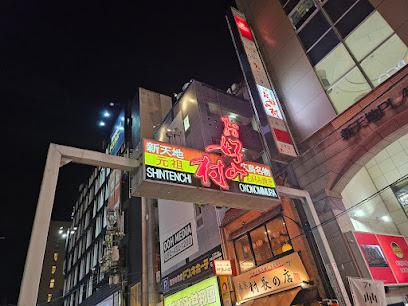
Shukkeien Garden
Experience the tranquility and beauty of Shukkeien Garden, a historical oasis in Hiroshima, blending nature and culture seamlessly.

Daishoin
Explore the serene beauty and spiritual richness of Daishoin Temple on Miyajima Island, a must-visit Buddhist temple for every traveler.
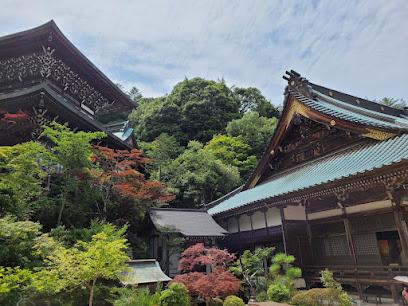
Hiroshima Orizuru Tower
Experience breathtaking views and rich history at Hiroshima Orizuru Tower, a symbol of resilience and peace in the heart of Hiroshima, Japan.

Iwakuni Castle
Explore Iwakuni Castle, a historical Japanese landmark boasting stunning views and rich cultural heritage in the heart of Yamaguchi.

Hiroshima Green Arena
Experience the excitement of sports and entertainment at Hiroshima Green Arena, a premier venue in Hiroshima offering diverse events year-round.

Hiroshima Museum of Art
Discover the artistic heart of Hiroshima at the Hiroshima Museum of Art, featuring a stunning collection of Western and Japanese masterpieces.

Hiroshima Museum of Art
Explore the Hiroshima Museum of Art, where Western and Japanese artistic traditions converge in a stunning architectural setting.

Kikko Park
Discover the serene beauty of Kikko Park in Iwakuni, where nature meets history, offering stunning views and a peaceful escape.
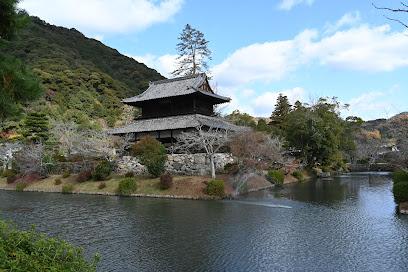
Essential places to dine
Nagataya
Experience authentic Hiroshima okonomiyaki at Nagataya - where tradition meets flavor in every bite!

Tsuki Akari
Experience the finest of Japanese cuisine at Tsuki Akari in Hiroshima - where tradition meets modern culinary art.

Hazeya
Discover Hazeya in Hiroshima: A haven for authentic Japanese cuisine featuring mouth-watering Okonomiyaki in a warm and welcoming atmosphere.

Parco della Pace
Experience authentic Italian pizza at Parco della Pace in Hiroshima – where every bite transports you straight to Italy!

Roopali Indian Restaurant
Experience the essence of India at Roopali Indian Restaurant in Hiroshima - where authentic flavors meet warm hospitality.

koba
Discover Koba: A modern izakaya in Hiroshima offering exquisite Japanese cuisine in a vibrant atmosphere.

MoreThan HIROSHIMA
Experience the best of Hiroshima's culinary scene at MoreThan HIROSHIMA with fresh local ingredients and modern Japanese cuisine.

Ekohiiki
Discover Hiroshima's Izakaya culture at Ekohiiki – where authentic Japanese flavors come alive in every dish.

Otis!
Experience the vibrant flavors of Mexico at Otis!, Hiroshima's premier Tex Mex restaurant featuring live music and vegetarian delights.

Jirokichi
Experience the rich flavors of Hiroshima at Jirokichi, where tradition meets innovation in every delicious bite of okonomiyaki.

Guttsuri-ann
Experience authentic izakaya dining at Guttsuri-ann, where fresh seafood meets traditional Japanese hospitality in the heart of Hiroshima.

Atago
Experience exceptional Teppanyaki dining at Atago in Hiroshima's Ana Crowne Plaza Hotel - where culinary artistry meets elegance.

Seasonal cuisine Nakashima
Experience the elegance of seasonal kaiseki cuisine at Nakashima in Hiroshima – where tradition meets innovation in every dish.

Hiyori
Experience authentic Hiroshima-style okonomiyaki at Hiyori - a must-visit destination for food enthusiasts exploring Japan.

Teppanyaki DONTOKO Hatchobori
Discover exquisite Japanese cuisine at Teppanyaki DONTOKO in Hiroshima's vibrant Hatchobori district—where tradition meets creativity.

Markets, malls and hidden boutiques
SOGO Hiroshima Store
Discover shopping bliss at SOGO Hiroshima Store, where fashion, food, and local treasures await in the heart of the city.

THE OUTLETS HIROSHIMA
Discover unbeatable shopping experiences at The Outlets Hiroshima, where high-end brands meet great deals in a modern setting.

youme Town Hiroshima
Explore Youme Town Hiroshima, a vibrant shopping mall filled with trendy shops, delicious eateries, and fun entertainment options in the heart of the city.
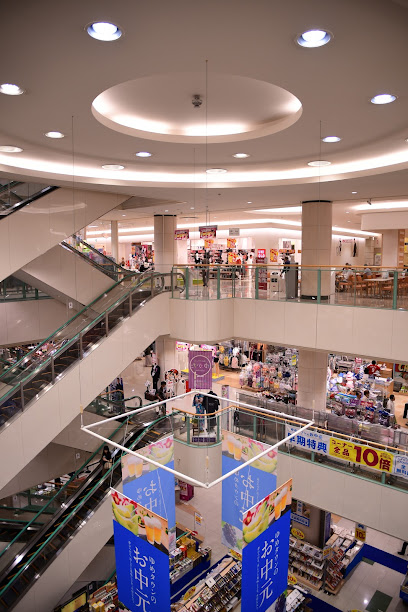
Alpark East
Discover Alpark East, Hiroshima’s vibrant shopping mall featuring diverse shops, delightful dining, and family-friendly entertainment all in one location.

Hiroshima PARCO
Explore Hiroshima PARCO, a vibrant shopping mall offering diverse stores, dining, and unique cultural experiences in the heart of Hiroshima.

Fukuya Hatchobori Store
Explore the elegance of shopping at Fukuya Hatchobori Store, where luxury meets local culture in the heart of Hiroshima.

MITSUKOSHI Hiroshima Store
Explore luxury shopping and cultural experiences at MITSUKOSHI Hiroshima Store, a premier destination for tourists in Hiroshima.

Fukuya Hiroshima station square store
Explore Fukuya Hiroshima Station Square Store for a unique shopping experience featuring local delicacies, fashion, and artistic displays in the heart of Hiroshima.

Hands Hiroshima
Explore Hands Hiroshima, a unique gift shop with a wide range of products, from home goods to DIY supplies, perfect for every traveler.

FUJI GRAND Hiroshima
Explore FUJI GRAND Hiroshima: A shopping paradise blending local culture with diverse culinary delights, perfect for every tourist's journey.

BOOKOFF SUPER BAZAAR Hiroshima Otemachi Store
Explore the eclectic world of used books, DVDs, and collectibles at Hiroshima's BOOKOFF SUPER BAZAAR, where every visit is a new adventure.

Sunmall
Explore Sunmall, Hiroshima's premier shopping destination offering a mix of local and international brands, delightful dining options, and cultural events.

Animate Hiroshima
Explore the vibrant world of anime and manga at Animate Hiroshima, your ultimate destination for Japanese pop culture treasures.

広島 T-SITE
Explore Hiroshima T-SITE: A vibrant shopping mall blending modern design with a rich literary experience, perfect for book lovers and cultural explorers.

EKICITY Hiroshima
Explore EKICITY Hiroshima, a vibrant shopping mall offering a unique blend of local culture, retail therapy, and delightful dining options.

Essential bars & hidden hideouts
KeMBY's Brew Pub
Discover KeMBY's Brew Pub in Hiroshima, where craft beer meets mouthwatering burgers and a lively atmosphere awaits.

koba
Discover Koba, Hiroshima's modern izakaya, where tradition meets innovation in every exquisite dish and vibrant atmosphere.

Molly Malone’s
Immerse yourself in the Irish spirit at Molly Malone’s, where hearty food and friendly vibes create an unforgettable experience in Hiroshima.

Hiroshima 1923 High Ball Bar
Discover Hiroshima 1923 High Ball Bar, where traditional high balls meet a modern bar experience in a lively setting.

SHACK
Discover the ultimate grilling experience at SHACK, where Hiroshima's flavors come alive in a vibrant and inviting atmosphere.

Bar Alegre
Discover the vibrant nightlife of Hiroshima at Bar Alegre, where friendly bartenders craft innovative cocktails in a lively atmosphere.

REAL BEER STYLE GOLDEN GARDEN ゴールデンガーデン
Experience the best of Hiroshima's craft beer and culinary delights at REAL BEER STYLE GOLDEN GARDEN, a cozy pub for every palate.

Mac Bar
Discover the lively atmosphere of Mac Bar in Hiroshima, where retro charm meets a fantastic selection of drinks and friendly service.

hangout(TAROS BREWING Beer Pub)
Discover a lively beer hall in Hiroshima offering a delightful selection of local brews and mouthwatering hamburgers in a vibrant atmosphere.
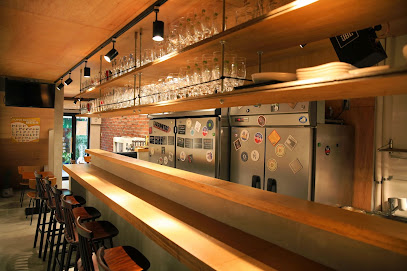
段原Little Standard 靴を脱いで寛ぐStyle
Experience the unique bar culture at段原Little Standard, where relaxation meets delightful cocktails in the heart of Hiroshima.

Tropical Bar Revolución
Experience the vibrant nightlife of Hiroshima at Tropical Bar Revolución, where tropical vibes meet expertly crafted cocktails in an inviting atmosphere.
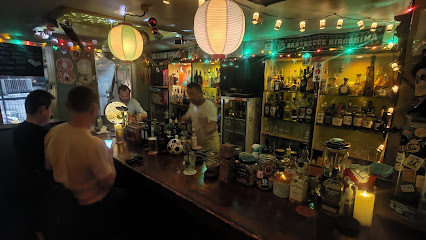
Bar the Lounge Top Note (ザ ラウンジ トップノート 別館)
Discover the art of mixology at Bar the Lounge Top Note, where local flavors meet cocktail elegance in the heart of Hiroshima.

FOUQUE
Discover FOUQUE, a lively bar in Hiroshima, where local flavors and a vibrant atmosphere create the perfect nightlife experience.

Bar the Lounge Top Note
Indulge in Hiroshima's nightlife at Bar the Lounge Top Note, where exquisite cocktails and elegant ambiance meet.

Bar Yoh
Discover the vibrant nightlife at Bar Yoh in Hiroshima, where exceptional drinks and a friendly atmosphere await every visitor.

Local Phrases
-
- Helloこんにちは
[Konnichiwa] - Goodbyeさようなら
[Sayonara] - Yesはい
[Hai] - Noいいえ
[Iie] - Please/You're welcomeどうぞ
[Douzo] - Thank youありがとうございます
[Arigatou gozaimasu] - Excuse me/Sorryすみません
[Sumimasen] - How are you?お元気ですか?
[Ogenki desu ka?] - Fine. And you?元気です。あなたは?
[Genki desu. Anata wa?] - Do you speak English?英語を話せますか?
[Eigo o hanasemasu ka?] - I don't understandわかりません
[Wakarimasen]
- Helloこんにちは
-
- I'd like to see the menu, pleaseメニューを見せてください
[Menyuu o misete kudasai] - I don't eat meat肉は食べません
[Niku wa tabemasen] - Cheers!乾杯!
[Kanpai!] - I would like to pay, pleaseお会計をお願いします
[Okaikei o onegaishimasu]
- I'd like to see the menu, pleaseメニューを見せてください
-
- Help!助けて!
[Tasukete!] - Go away!行ってください!
[Itte kudasai!] - Call the Police!警察を呼んでください!
[Keisatsu o yonde kudasai!] - Call a doctor!医者を呼んでください!
[Isha o yonde kudasai!] - I'm lost道に迷っています
[Michi ni mayotteimasu] - I'm ill具合が悪いです
[Guai ga warui desu]
- Help!助けて!
-
- I'd like to buy...買いたいです...
[Kaitai desu...] - I'm just looking見るだけです
[Miru dake desu] - How much is it?いくらですか?
[Ikura desu ka?] - That's too expensiveそれは高すぎます
[Sore wa takasugimasu] - Can you lower the price?値段を下げてもらえますか?
[Nedan o sagete moraemasu ka?]
- I'd like to buy...買いたいです...
-
- What time is it?今何時ですか?
[Ima nanji desu ka?] - It's one o'clock一時です
[Ichiji desu] - Half past (10)10時半
[Juuji han] - Morning朝
[Asa] - Afternoon午後
[Gogo] - Evening夕方
[Yuugata] - Yesterday昨日
[Kinou] - Today今日
[Kyou] - Tomorrow明日
[Ashita] - 1一
[Ichi] - 2二
[Ni] - 3三
[San] - 4四
[Shi] - 5五
[Go] - 6六
[Roku] - 7七
[Nana] - 8八
[Hachi] - 9九
[Kyu] - 10十
[Ju]
- What time is it?今何時ですか?
-
- Where's a/the...?...はどこですか?
[...wa doko desu ka?] - What's the address?住所は何ですか?
[Juusho wa nan desu ka?] - Can you show me (on the map)?地図で見せてもらえますか?
[Chizu de misete moraemasu ka?] - When's the next (bus)?次の(バス)はいつですか?
[Tsugi no (basu) wa itsu desu ka?] - A ticket (to ....)(...)へのチケット
[(...) e no chiketto]
- Where's a/the...?...はどこですか?
History of Hiroshima
-
Hiroshima was founded in 1589 by the powerful warlord Mōri Terumoto. It quickly grew into an important regional hub due to its strategic location along the Ota River delta. The city became the capital of Hiroshima Domain and saw significant development under the Mōri clan.
-
During the Edo Period (1603–1868), Hiroshima flourished as a castle town under the governance of the Asano clan. The city's economy thrived due to its role in maritime trade and the production of goods such as rice, sake, and textiles. The establishment of Hiroshima Castle played a central role in the city's development.
-
With the Meiji Restoration in 1868, Hiroshima underwent rapid modernization. The city opened up to foreign influences, and industrialization took hold. In 1889, Hiroshima was officially designated as a city. The construction of railways and the development of the port facilitated economic growth and urban expansion.
-
On August 6, 1945, Hiroshima became the first city in history to be targeted by an atomic bomb. The bomb, dropped by the United States, caused unprecedented devastation, killing an estimated 140,000 people by the end of the year. The event marked a turning point in World War II and had profound implications for global politics and the future of warfare.
-
After World War II, Hiroshima embarked on a path of reconstruction and renewal. The city was rebuilt with a focus on peace and reconciliation. The Hiroshima Peace Memorial Park was established to commemorate the victims of the atomic bombing and to promote global peace. The annual Hiroshima Peace Memorial Ceremony attracts visitors from around the world.
-
Today, Hiroshima is a vibrant city that seamlessly blends its rich cultural heritage with modern attractions. The Hiroshima Castle, Shukkeien Garden, and the Hiroshima Peace Memorial Museum are key historical sites. The city is also known for its culinary delights, particularly Hiroshima-style okonomiyaki, and its lively festivals such as the Hiroshima Flower Festival.
Hiroshima Essentials
-
Hiroshima can be accessed via Hiroshima Airport, which is about 50 kilometers east of the city center. From the airport, you can take the Airport Limousine Bus to reach Hiroshima Station in approximately 45 minutes. Alternatively, you can fly into Osaka's Kansai International Airport or Tokyo's Narita International Airport and take the Shinkansen (bullet train) to Hiroshima. The Shinkansen from Osaka takes about 1.5 hours, and from Tokyo, it takes around 4 hours.
-
Hiroshima boasts an efficient public transportation system, including buses, trams, and trains. The Hiroshima Electric Railway, also known as Hiroden, operates an extensive tram network that covers most of the city. The JR Hiroshima Station is a central hub for local and regional trains. For shorter distances, taxis are available, and bike rentals are a popular option for exploring the city at a leisurely pace.
-
The official currency in Japan is the Japanese Yen (JPY). Credit cards are widely accepted in hotels, restaurants, and larger shops, but it is advisable to carry cash for smaller establishments and local markets. ATMs are readily available throughout the city, including at convenience stores, which often have machines that accept international cards.
-
Hiroshima is generally a safe city for tourists. However, standard safety precautions should be taken. Avoid leaving belongings unattended and be cautious in crowded areas. Hiroshima does not have specific high-crime areas targeting tourists, but as with any urban environment, it is wise to stay vigilant, especially at night.
-
In case of an emergency, dial 110 for police assistance and 119 for fire or medical emergencies. Hiroshima has several hospitals and clinics with English-speaking staff. It is advisable to have travel insurance that covers medical emergencies. Keep a list of emergency contacts and the address of your accommodation.
-
Fashion: Do dress conservatively and avoid overly casual clothing when visiting religious sites or formal settings. Religion: Do respect local customs and traditions. Remove your shoes when entering temples and shrines. Public Transport: Do be quiet and respectful on public transport. Avoid talking on your phone. Greetings: Do bow when greeting people as a sign of respect. Eating & Drinking: Do try local dishes and show appreciation for the food. Don't tip, as it is not customary in Japan.
-
To experience Hiroshima like a local, visit the local markets such as the Asaichi morning market for fresh seafood and produce. Try Hiroshima-style okonomiyaki, a savory pancake, at one of the local restaurants. Take a leisurely walk through the Peace Memorial Park and visit the Hiroshima Peace Memorial Museum to understand the city's history. For a unique experience, take a ferry to Miyajima Island and visit the iconic Itsukushima Shrine.
Trending Landmark in Hiroshima
-
Atomic Bomb Dome
-
Peace Memorial Park - Hiroshima
-
Hiroshima Peace Memorial Museum
-
Hiroshima Castle
-
Shukkeien Garden
-
Hiroshima National Peace Memorial Hall
-
Shishiiwa Observatory
-
Children's Peace Monument
-
Hypocenter
-
Hiroshima Victims Memorial Cenotaph
-
Hiroshima World Heritage River Cruise
-
Shirakami-sha Shrine
-
Former Hiroshima Branch of the Bank of Japan
-
Aioi Bridge
-
Flame of Peace
Nearby Cities to Hiroshima
-
Things To Do in Fukuoka
-
Things To Do in Osaka
-
Things To Do in Nara
-
Things To Do in Kyoto
-
Things To Do in Ulsan
-
Things To Do in Busan
-
Things To Do in Gyeongju
-
Things To Do in Pohang
-
Things To Do in Daegu
-
Things To Do in Andong
-
Things To Do in Nagoya
-
Things To Do in Kanazawa
-
Things To Do in Suncheon
-
Things To Do in Daejeon
-
Things To Do in Jeonju


















